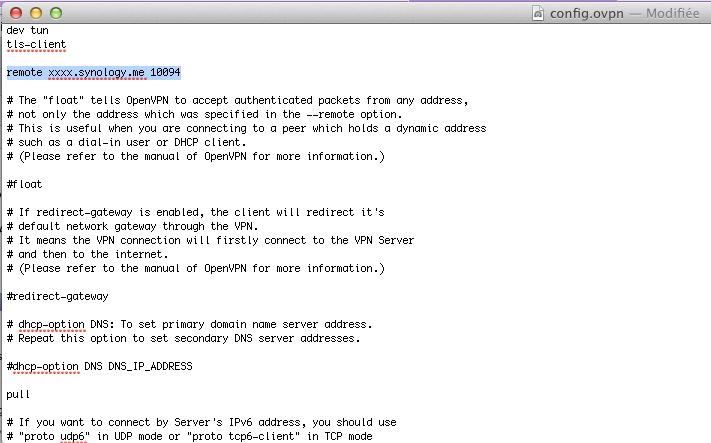

To configure your VPN client, simply add the file VPNConfig.ovpn to your VPN client. To connect to your VPN, you will need a VPN client on your computer or smartphone:
Synology openvpn tunnelblick install#
To get connected, you simply need to install your VPN client and configure it using the file VPNConfig.ovpn that you have edited in the previous step.
Synology openvpn tunnelblick how to#
In case you need it, this article explains how to configure the firewall of your Synology NAS.Īt this point, the installation and configuration of the VPN Server and your Synology NAS are finished. To do that, go to the firewall settings to authorise the protocol OpenVPN of the VPN Server as indicated below: The firewall must be configured to authorise the connection to the VPN Server by your Synology NAS. Then save the changes and keep the file VPNConfig.ovpn for the last step of the guide.

Enter the IP address of your Synology NAS. Name this VPN connection in the Service Name field and click Create. Select VPN for Interface and L2TP over IPSec for VPN Type. Click the + icon in the lower left corner to create a new connection. Once connected to the DiskStation Manager (DSM) of your Synology, go to the Package Centre to install the “VPN Server”. On your Mac, go to System Preferences from Apple menu. 1 – Installing and configuing a VPN Server Once this service is enabled, you can connect using the VPN client of your choice, from your computer or your smartphone. In this article you will discover how to create your own VPN server using a Synology NAS hosted at Infomaniak. A Synology NAS hosted at Infomaniak lets you create your own virtual private network (VPN) to protect your Internet navigation while enjoying bandwidth exceeding 60 Gb/s! A VPN protects your Internet navigation by encapsulating the Internet connection in a private and encrypted “tunnel”.


 0 kommentar(er)
0 kommentar(er)
